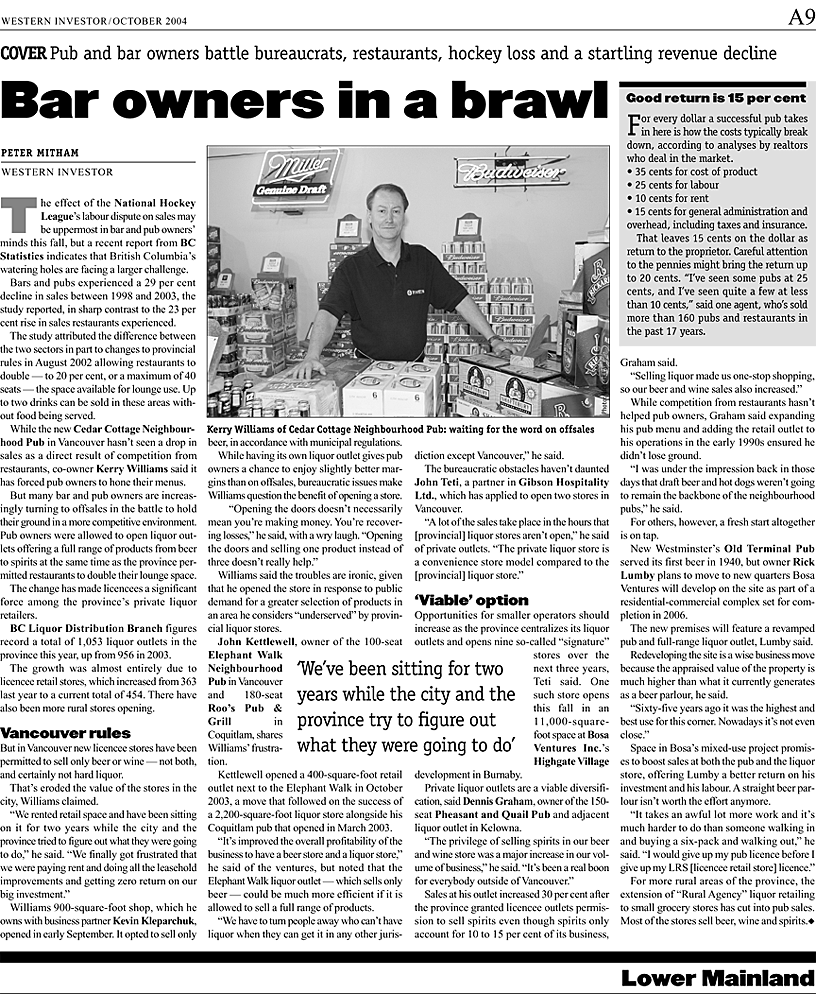Agency analyst views it as move from ‘hot, hot’ to just ‘hot’
Derrick Penner
Sun
|
A 14-per-cent drop in housing starts across Greater Vancouver in September compared with the same month a year ago is no sign that the region’s red hot real estate market is leveling off, Canada Mortgage and Housing says. The decline was entirely in the highly cyclical multiple-unit sector offset by an increase in single family starts, explained CMHC senior market analyst Cameron Muir. Builders started construction on 1,210 units in multiple-unit projects across Greater Vancouver in September, according to CMHC figures, 317 fewer than in September 2003, a 21 per cent drop. September’s single family home starts, however, rose by 53, a 13-per-cent gain. “The first thing I do is look at the multiples and the singles,” Muir said. “If the multiples are down and the singles are trending up, I know home builders are still confident that the market is there.” Muir added that multiple-unit projects take a long time to plan and can involve hundreds of starts per project, so a project’s start date can skew overall statistics. Housing inventories, he said, historically low on the multiple-unit side with about 100 units unoccupied, are a better indicator of the market. In that respect, Muir sees that there is still room for developers to expand operations over the next year. Housing starts across the province edged up two per cent to 2,782 units, CMHC has reported, and year-to-date figures of 23,592 units represents a 31-per-cent gain from 2003. On the resale side, sales remain on target to set a record in 2004, but the Real Estate Board of Greater Vancouver reports declining sales over the past three months. Statistics Canada has also tracked declining building permit values over the past two months. Muir said those figures do not yet set a trend toward a cooling market and added that the market likely won’t see the double-digit price increases that it has over the past couple of years. But resale levels are still strong by historical standards, he said. “My view of the market is that it is changing from a hot, hot market to just a hot market,” he said. Housing starts across Canada in September fell due to a decline in multiple-unit projects, CMHC said Friday. Nationally, housing starts dropped to a seasonally adjusted annual rate of 231,000 from 241,100. In urban areas, the agency found a 5.9-per-cent increase in starts of single detached homes to 106,200. The overall starts were down 4.7 per cent, however, because of a 14-per-cent decline in multiple-unit starts. Monthly figures are adjusted to remove normal seasonal variations and multiplied by 12 to reflect annual levels. B.C. was one of three regions to see a decline in urban housing starts along with Ontario, which recorded a 6.5-per-cent drop, and Quebec, which saw a 1.6-per-cent decline. Urban housing starts rose by 9.2 per cent in the Prairie provinces and 2.1 per cent in Atlantic Canada. The estimated number of rural starts in Canada came in at a seasonally adjusted annual rate of 26,800 units. © The Vancouver Sun 2004 |




